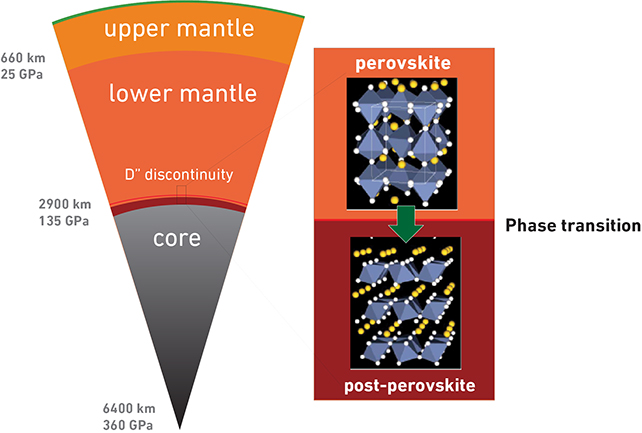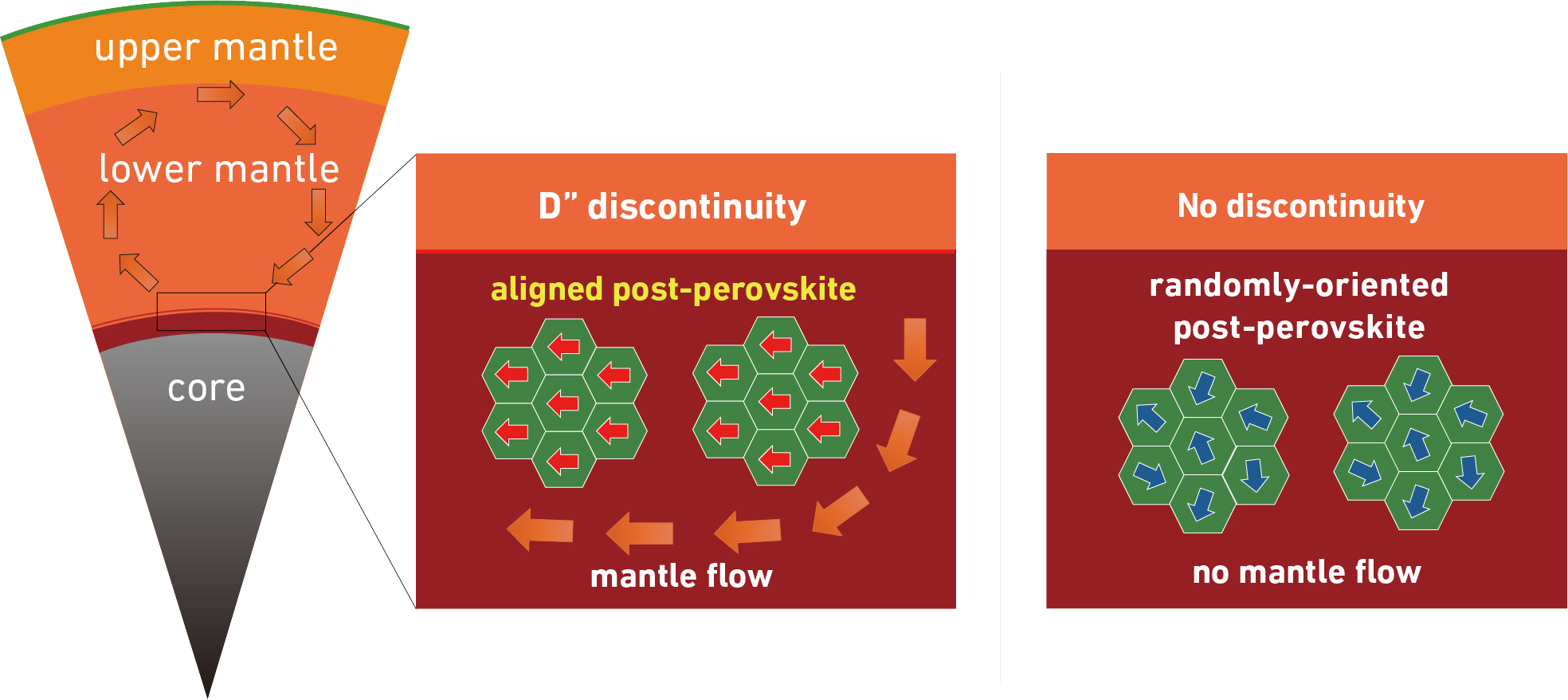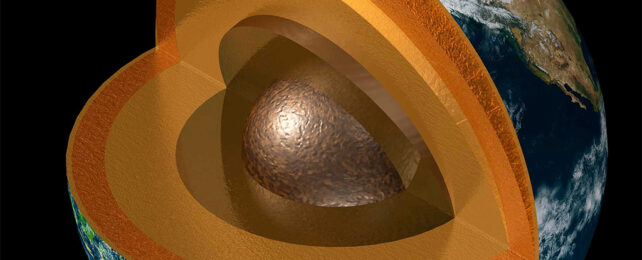The D" layer, some 2,700 kilometers (nearly 1,700 miles) below our feet, has been mystifying scientists for decades. Now we may have an answer as to what exactly goes on in this special zone deep inside Earth – solid rock is flowing.
Seismic waves unexpectedly speed up as they pass through the boundary of the D" layer, and a 2004 study seemed to find the answer: it showed that extreme pressures and extreme temperatures could turn the lower mantle mineral perovskite into a different form labeled 'post-perovskite', somewhere around the D" layer boundary.
However, it was later found that this new phase isn't enough on its own to explain the acceleration of seismic waves.
For the new study, scientists in Switzerland and Japan ran computer simulations and lab tests to determine that the crystals in post-perovskite all need to be pointing in the same direction for seismic waves to speed up.

"This discovery not only solves the mystery of the D" layer but also opens a window into the dynamics in the depths of the Earth," says geoscientist Motohiko Murakami, from ETH Zurich in Switzerland.
"We have finally found the last piece of the puzzle."
The researchers essentially recreated the deep layers of Earth in their lab, on a much smaller scale. They found that the alignment of the post-perovskite crystals determines its hardness, and thus the movement of waves rippling through it.
They found something else, too: that the solid rock above the D" layer can flow in a convection pattern. This type of movement, which varies across different parts of Earth's layers, determines the alignment of post-perovskite crystals.
It's driven by a combination of cooler material, which is sinking, and hotter material, which is rising. It's the first experimental evidence we have of such movement in this region of Earth's insides – though of course direct observations are impossible.

"These findings indicate that the texture of the post-perovskite phase can explain most of the key features of the D" discontinuity," write the researchers in their published paper.
This all feeds into our knowledge of the complex interplay of heat, pressure, and movement that's happening way down deep under Earth's surface. Having a better understanding of these forces then tells us more about everything from volcanic eruptions to Earth's magnetic field.
The core-mantle boundary (CMB), which is where the solid mantle hits Earth's liquid outer core, is of particular interest to scientists. It represents a huge switch between materials in terms of density, composition, conductivity, and other measures – making it vital to the most fundamental forces driving our planet.
"Our discovery shows that the Earth is not only active on the surface, but is also in motion deep inside," says Murakami.
While the study helps answer some questions, there are still a lot of mysteries left down there.
The research has been published in Communications Earth & Environment.
